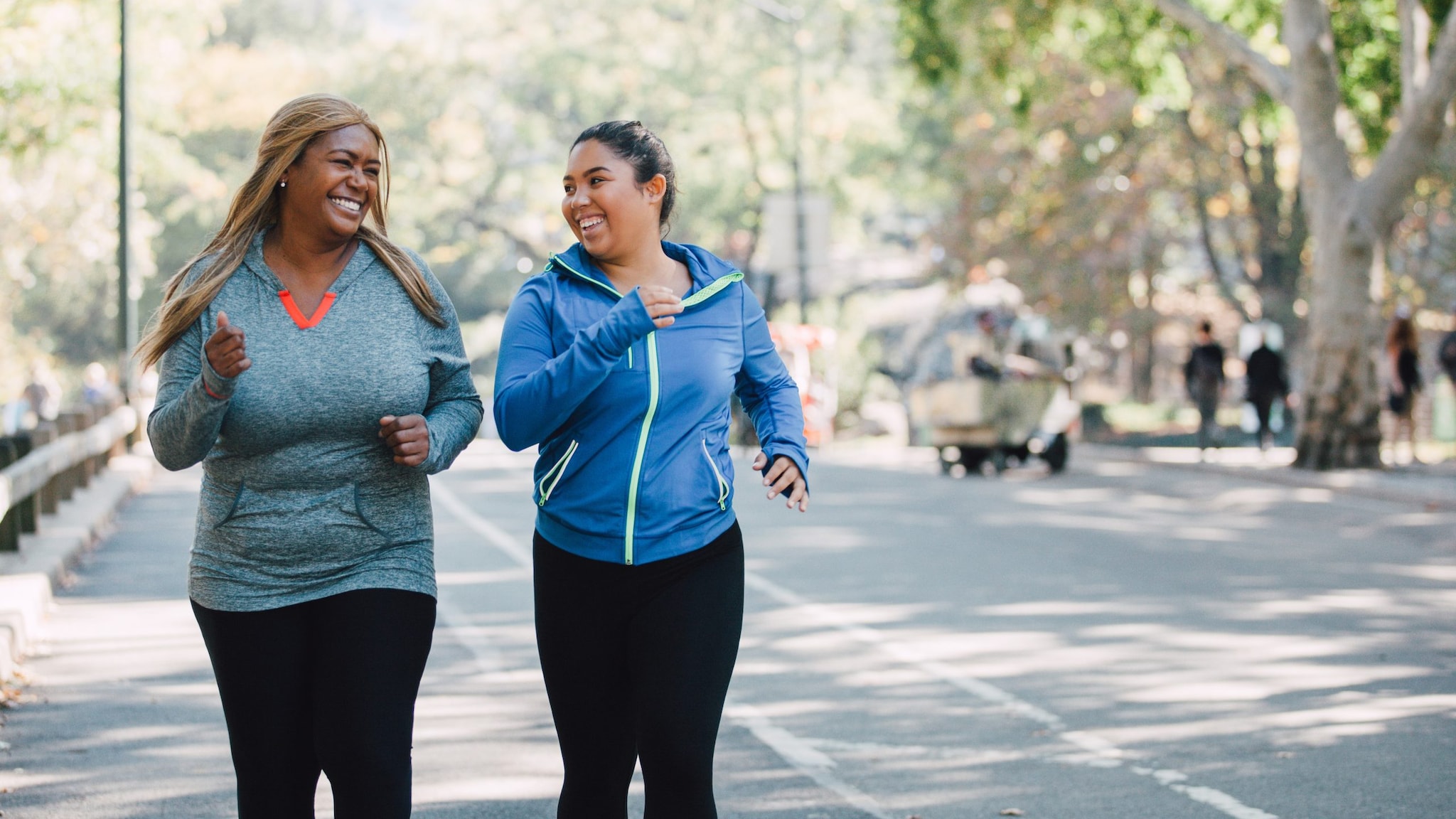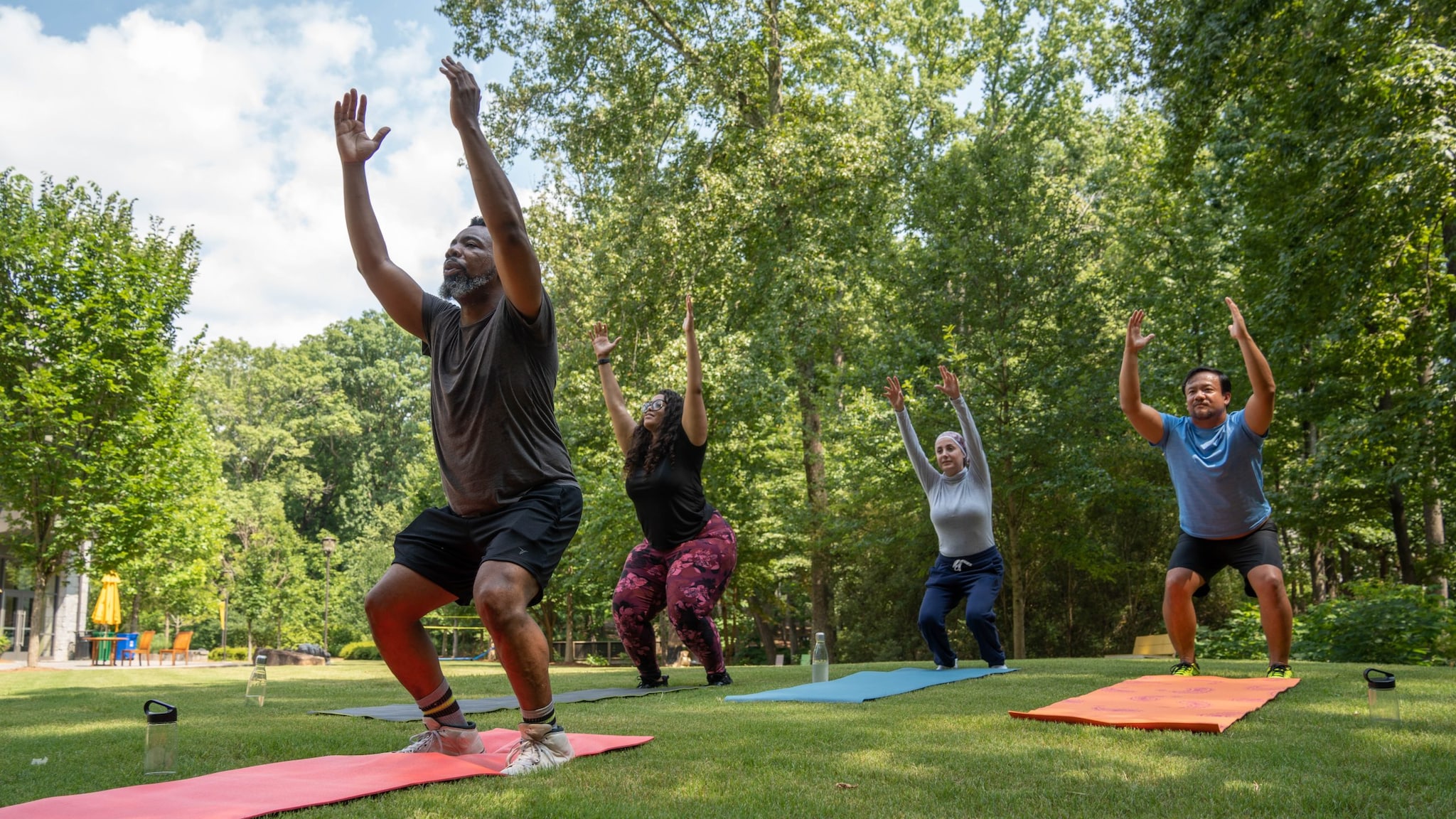Key points
- Adults need a mix of aerobic and muscle-strengthening activities each week.
- Aerobic activity needs to be at a moderate or vigorous intensity.

Aerobic activity - what counts?
Aerobic physical activity or "cardio" gets you breathing harder and your heart beating faster. Physical activities at a moderate or vigorous intensity count toward meeting the aerobic guidelines. Intensity is how hard your body works during aerobic activity.
Each week, adults should aim for 150 minutes of moderate-intensity activity, or 75 minutes of vigorous-intensity activity, or an equivalent combination. You don't have to do it all at once. You can spread your activity out during the week and break it up into smaller chunks of time. It could be 30 minutes a day, 5 days a week. See tips for getting started.
How do you know if you're doing moderate or vigorous aerobic activity?
Moderate-intensity aerobic physical activity means you're working hard enough to breathe harder, raise your heart rate, and break a sweat. You'll notice that you'll be able to talk, but not sing the words to your favorite song.
Examples of activities that require moderate effort include:
- Walking fast
- Doing water aerobics
- Riding a bike on level ground or with few hills
- Playing doubles tennis
- Pushing a lawn mower
Vigorous-intensity aerobic activity means you're breathing hard and fast, and your heart rate is higher than with moderate activity. You won't be able to say more than a few words without pausing for a breath.
Examples of activities that require vigorous effort include:
- Jogging or running
- Swimming laps
- Riding a bike fast or on hills
- Playing singles tennis
- Playing basketball
You can do moderate- or vigorous-intensity aerobic activity, or a mix of the two each week. A rule of thumb is that 1 minute of vigorous-intensity activity is about the same as 2 minutes of moderate-intensity activity.
How do you know what is right for you?
Everyone's fitness level is different. This means that walking may feel like a moderate-intensity activity to you, but for others, it may feel vigorous. It all depends on you—the shape you're in, what you feel comfortable doing, and your health condition. What's important is that you do physical activities that are right for you and your abilities. Learn more about getting started with physical activity to improve health.
If you want to do more vigorous activities, slowly replace those that take moderate effort like brisk walking with more vigorous activities such as jogging. If you have a history of a chronic disease, consider telling your doctor you are planning to increase your physical activity, including moving to more vigorous activity.
Learn more about ways that you can add activities to your life.

Muscle strengthening - what counts?
In addition to moderate or vigorous aerobic activity, you need to work at least 2 days a week to make your muscles stronger.
To gain health benefits, do muscle-strengthening activities to the point where it's hard to do another repetition without help. A repetition is one complete movement of an activity, like lifting a weight or doing one sit-up. Try to do 8–12 repetitions per activity, which counts as one set. Try to do at least one set of muscle-strengthening activities; to gain even more benefits, do two or three sets.
Activities should work all the major muscle groups of your body—legs, hips, back, chest, abdomen, shoulders, and arms.
Examples of what you can do include:
- Lifting weights
- Working with resistance bands
- Doing exercises that use your body weight for resistance, such as push-ups or sit-ups
- Digging in a garden
- Doing some yoga postures
What counts for children and older adults?
Children and adolescents ages 6 to 17 need 60 minutes or more of moderate- to vigorous-intensity physical activity daily. See what counts.
Adults 65 and older need at least 150 minutes a week of moderate-intensity activity, 2 days of activities that strengthen muscles, and activities to improve balance. See what counts.
Additional physical activity basics resources
Physical Activity for Different Groups
Healthy Pregnant and Postpartum Women
Adults with Chronic Health Conditions and Disabilities
Adding Physical Activity to Your Life

Want additional tips and resources to be active?
Learn about Active People, Healthy NationSM, CDC’s national initiative to help people be more physically active.
